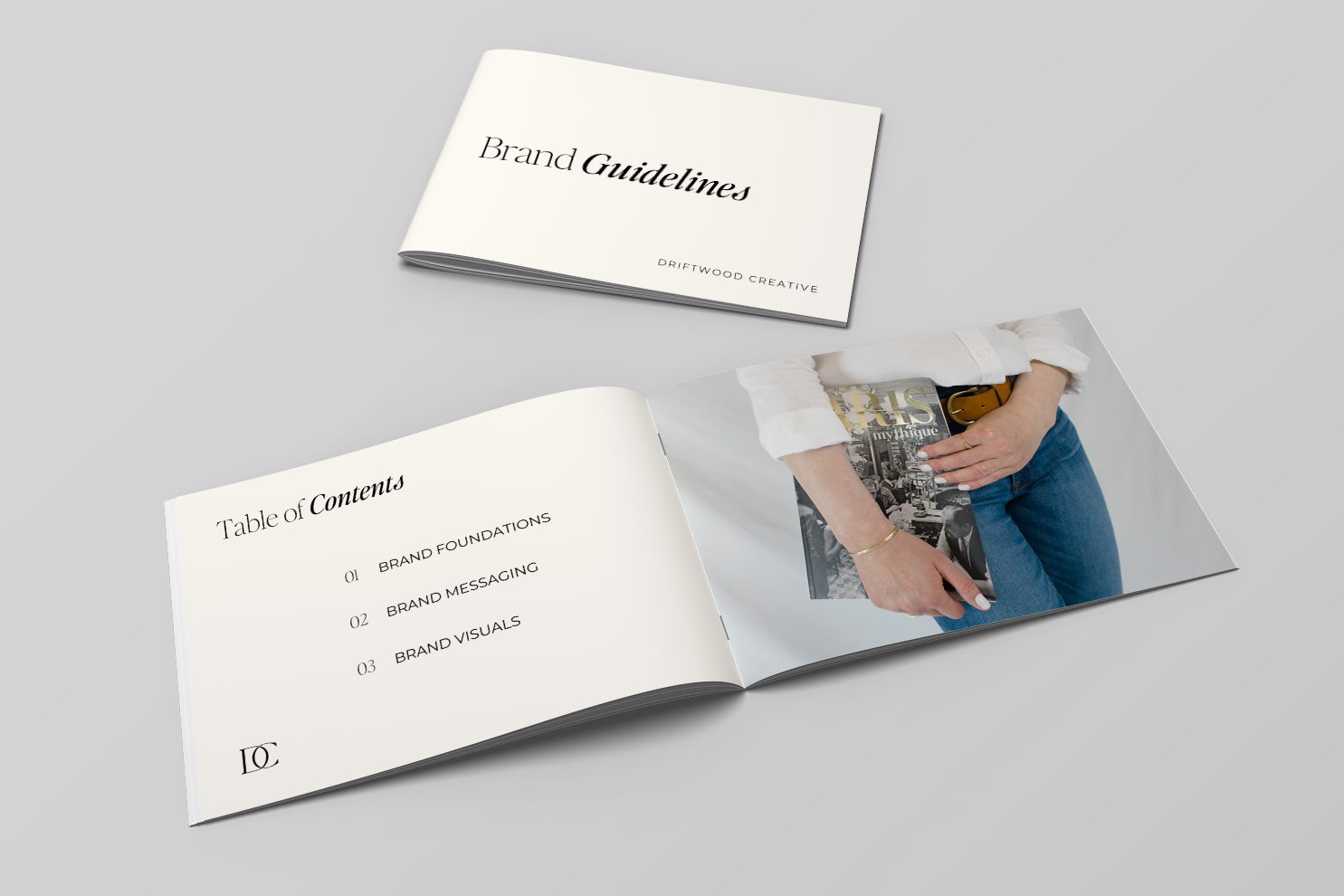Filed under:
May 15, 2023
Date Published:
Branding Essentials: What To Include In Your Brand Guidelines

Brand guidelines, also known as a brand manual or brand style guide, is a document that outlines how your brand looks, sounds, and interacts with the rest of the world. Effective brand guidelines serve as a roadmap for your brand and ensure consistency across all channels and mediums. But figuring out what to include in your brand guidelines can feel overwhelming. To simplify things, I’ve distilled the essential elements your brand guidelines should cover below.
Why Are Brand Guidelines Important?
Brand guidelines are vital to establishing and reinforcing your brand’s identity. They are the foundation upon which all your marketing efforts are built, and concrete brand guidelines help you with the following:
- Consistency: Consistency is critical to building brand recognition and trust. Brand guidelines ensure that every touchpoint of your brand reflects a cohesive brand identity.
- Differentiation: In a crowded marketplace, standing out is crucial. Brand guidelines define your distinctive brand identity, helping you differentiate yourself from competitors.
- Efficiency: With a clear set of guidelines for things like colors, design elements, and fonts, you save valuable time and effort when creating content for your brand. When all aspects of your brand identity are defined in writing, it becomes easier to maintain consistency, even as your business grows.
What to Include in Your Brand Guidelines
There are no set rules regarding “must-haves” in brand guidelines. In fact, the level of detail can vary significantly based on the size of your brand. Brand guidelines can range from a single-page mood board to a 100-page presentation.
For small businesses and entrepreneurs, your brand guidelines don’t need to be excessive to be effective. However, there are several crucial points that your brand guidelines need to cover if you’re trying to build a comprehensive brand identity. I’ve distilled these elements into three categories: Brand Foundations, Brand Messaging, and Brand Visuals.
Brand Foundations
Your brand foundations are exactly what they sound like. The foundation of your brand. You may have even defined these as part of your overall business strategy before starting the official “branding” process.
- Mission: Your brand mission outlines the purpose and reason for your brand’s existence.
- Vision: Your brand vision looks to the future and defines your long-term aspirations.
- Core Values: Brand core values represent the guiding principles behind your brand’s mission, personality, and customer interactions. Choose and define 3-5 core values for the most impact.
- Ideal Customer: Your ideal customer persona should include basic demographic information and define why they need your product or service.
- Core Offerings: Your core offerings are your main products or services. You should articulate the benefits and features of each offering and how it meets the needs of your ideal customer.
- Unique Value Proposition: Your unique value proposition – also known as your unique selling proposition or USP – succinctly communicates the unique value you bring to your customers. This tells customers what makes you YOU.
Brand Messaging
Brand messaging is how you choose and use words to craft and share your brand story. Articulating a few vital elements of your brand messaging as part of your brand guidelines will help set the tone for future communications.
- Tagline: Your tagline should be memorable and impactful, capturing the essence of your brand.
- Backstory: Share the story behind your brand, including its origin, inspiration, and milestones. This humanizes your brand and builds an emotional connection with your audience.
- Brand Personality & Voice: Define your brand’s personality and tone of voice. Include basic guidelines for writing style, language, and tone to ensure consistency across all platforms.
Brand Visuals
When most people think of branding, they think of brand visuals. This covers all things like logos, colors, fonts, and design. Developing and applying clear guidelines for your visual identity is critical to achieving brand recognition.
- Logos: Multiple logo variations provide flexibility for your brand. For example, your logo suite may include a primary logo, a secondary logo, and a submark.
- Color Palette: Define your brand’s color palette, including primary, secondary, neutral, and accent colors. Be sure to include color codes and guidelines for usage in different contexts.
- Typography: Choose fonts that align with your brand personality and are easily read across different mediums. Specify primary and secondary fonts and provide guidelines and examples for usage.
- Visual Elements: Define other visual elements, such as icons, patterns, and imagery. Specify guidelines for usage to maintain consistency across all communication channels.
Developing brand guidelines for your small business can feel overwhelming. I hope this list gets you pointed in the right direction! If you’re still unsure what to include in your brand guidelines or just want a partner to help guide you through the process, I’d love to chat. You can reach out here to schedule a consultation or simply ask me a question. I look forward to connecting with you!